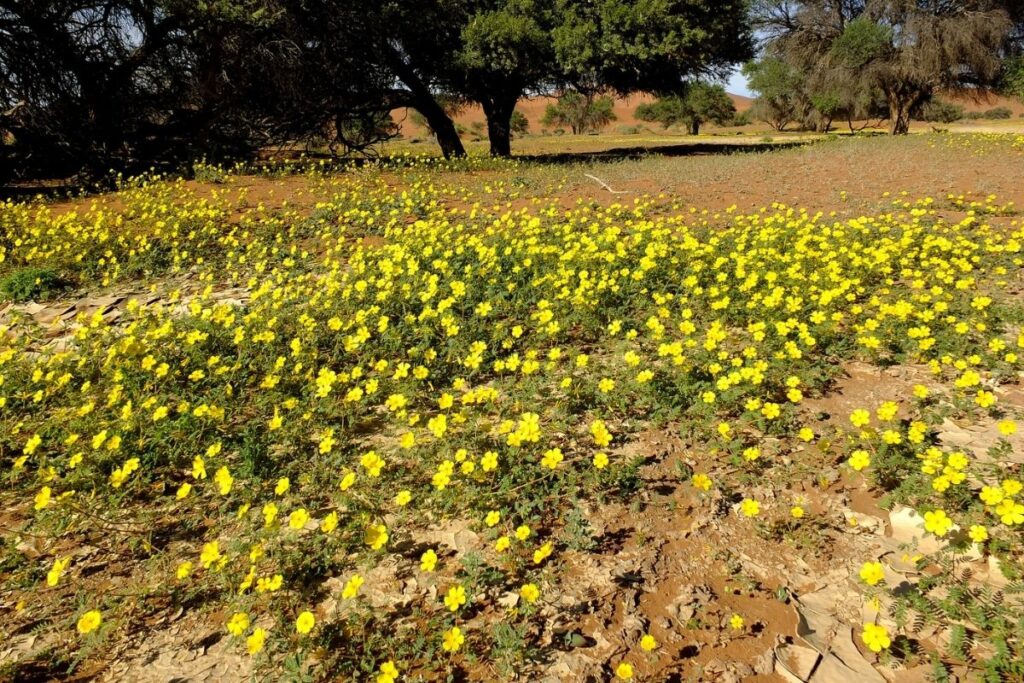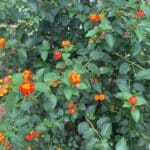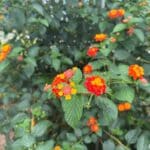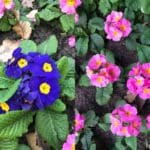Growing a garden can be a fun and rewarding pastime that just about anyone can dig! Growing your own flowers and food can bring beauty to your yard, and it can even be exciting to watch the animals and pollinators that your garden attracts.
- #1. Coneflowers
- #2. Lantana
- #3. Salvia
- #4. Lavender
- #5. California Poppy
- #6. Veronica
- #7. Yarrow
- #8. Blanket Flowers
- #9. Pineleaf Penstemon
- #10. Sedum
- #11. Russian Sage
- #12. Globe Thistle
- #13. Amsonia
- #14. Beardtongue
- #15. Geranium
- #16. Kangaroo Paw
- #17. Trumpet Vine
- #18. Wild Lilac
- #19. Creeping Phlox
- #20. Ornamental Grass
- #21. Butterfly Bush
- #22. Coreopsis
- #23. Wormwood
- #24. Wand Flower
- #25. Ninebark
- #26. Panicle Hydrangea
- #27. Baptista
- #28. Catmint
- #29. Verbena
- #30. Angelonia
- #31. Bidens
- #32. Moss-Rose Purslane
- #33. Marigold
- #34. Zinnia
- #35. Harebell
- FAQs
However, depending on where you live, the act of growing a garden can be tougher than you might think.
Depending on the weather, you might need to take precautions to make sure your plants survive. If you live in an area with low rainfall and frequent drought, then you will need plants that are drought resistant.
When you select drought-resistant flowers to grow, you can work with your natural conditions instead of against them.
A good rule of thumb is to select native plants, but if you aren’t sure which plants are native to your growing zone, you may want to consider plants that are generally well-regarded for their drought-resistant properties.
There are several types of drought-proof plants out there that you can grow in your garden. Here are the best drought tolerant plants and flowers to get you started on the right foot.
#1. Coneflowers
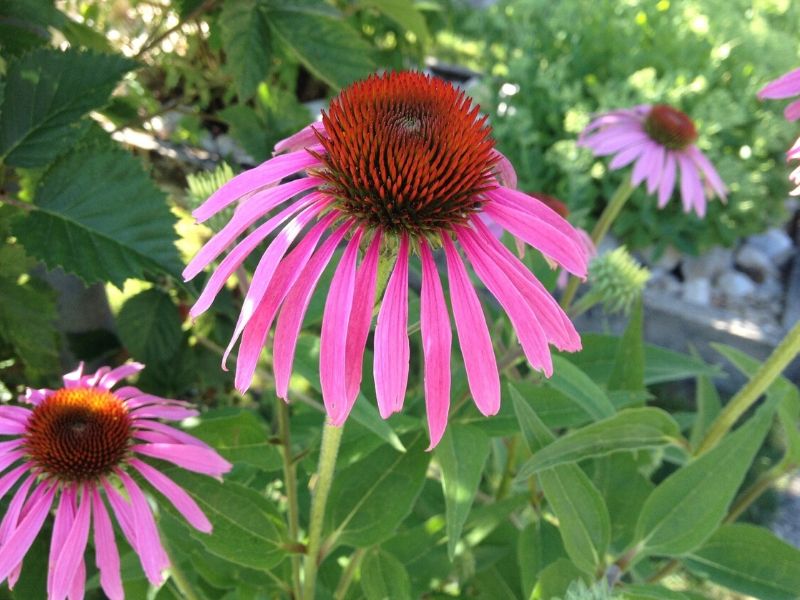
Coneflowers are not only self-sowing, saving you the time and money it takes to replant them, but they don’t need a lot of upkeep.
These flowers can handle droughts and poor soil, as long as there’s some form of drainage. Along with the drought-tolerant properties, the flowers also attract birds and butterflies.
Not only will you have beautiful flowers that can handle a lack of rain, but they will actively bring pollinators to your garden, too.
#2. Lantana
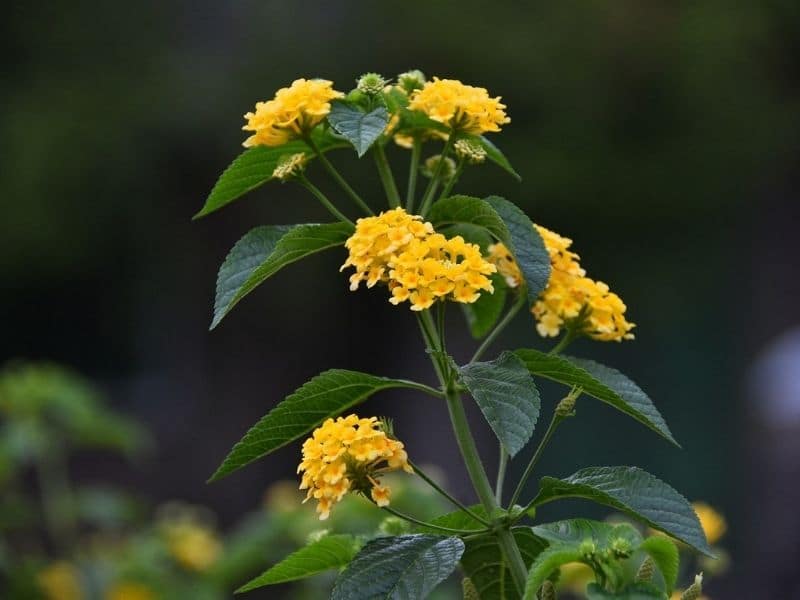
Just because these lantana flowers are extremely beautiful doesn’t mean that they are high maintenance. The lantana has several colorful blossoms on its stems, and the tallest types of this plant can grow to be six feet tall!
Despite its beauty, the flower doesn’t need a lot of water and can easily survive in dry conditions.
#3. Salvia
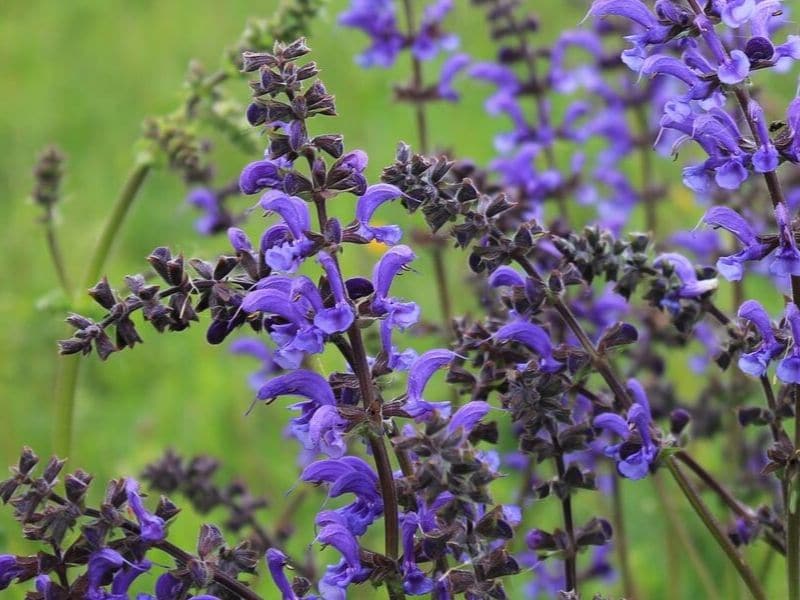
This heat resistant plant attracts the attention of humans, hummingbirds, and other pollinators alike. Not only that, but it also grows all season long no matter the landscape or conditions.
You can find these columns of beautiful flowers with aromatic foliage in several colors and at heights from eight to thirty inches tall. Keep an eye on your salvia, because you might see a hummingbird flitting around.
#4. Lavender
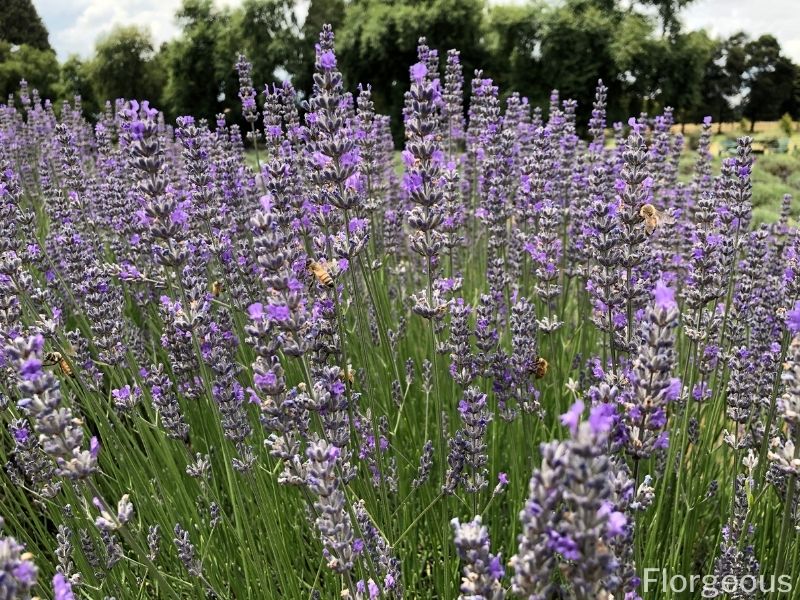
Lavender plant smells great, acts as a wonderful essential oil to address all kinds of conditions, and attracts butterflies and other types of pollinators.
Lavender originally grew in the Middle East, so it almost goes without saying that it can handle drought quite well and it’s one of the most common full sun plants you can grow.
#5. California Poppy
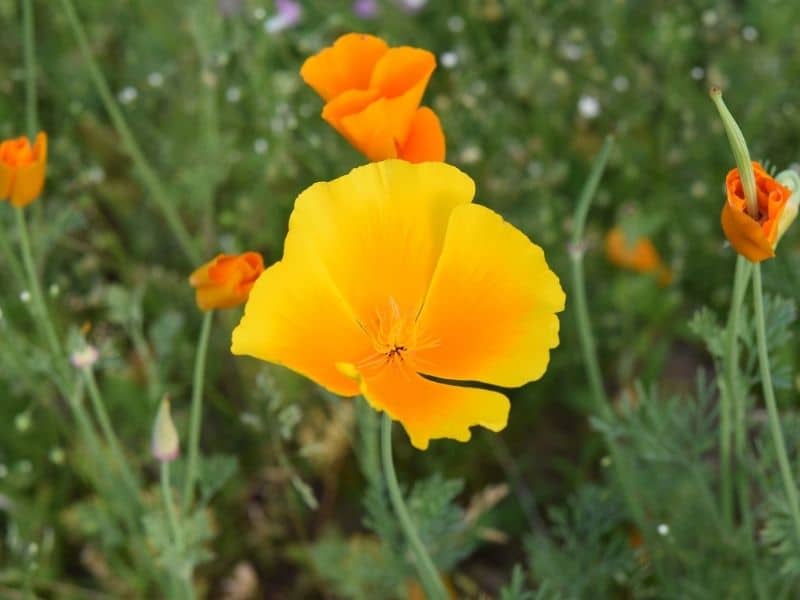
Not only are they one of the best drought tolerant flowers, but California poppies can also handle gardens that are not as fertile as you might like them to be.
If you have poor growing conditions in your garden due to a lack of rainfall, then you can still plant these poppies. Their orange colors are beautiful and almost look like a sunset if you catch them in the right light.
#6. Veronica
This flower is not only very easy to grow, but it also comes in many different colors and will bloom for a very long time. As long as you give it full sun and soil that is well-draining, you can have beautiful flowers that will grow well and attract pollinators regardless of the rainfall level.
#7. Yarrow
Yarrow is very easy to care for and will spring up in almost any condition. It can even thrive in soil that is excessively fast-draining due to high sand content. It comes in vibrant red and yellow blooms, and will always grow easily without requiring too much maintenance.
As a groundcover, yarrow does well in a rock garden. It also makes a good border plant for perennials and can be used to edge a veggie or herb garden.
#8. Blanket Flowers
While you might personally end up shedding blankets during a drought and the accompanying heatwave, you probably don’t have to worry about this kind of blanket withering!
Blanket flowers are often grown on the prairie, and you can enjoy their bright red and yellow shades as they bring pollinators to your yard.
#9. Pineleaf Penstemon
This plant is semi-evergreen throughout much of the year, but when it blooms, you will certainly know about it! You’ll see all of its bright red flowers from far away in the sun, and so will hummingbirds and butterflies.
For as beautiful as this flower is, it is equally surprising that it can survive with minimal water and will thrive in dry environments.
#10. Sedum
This flower almost looks like clumps of cotton candy with its texture. There’s a reason most people grow these succulents for their blooms, and the plant’s leaves allow it to easily hold onto water.
There are hundreds of sedum plants out there, and you are sure to find one that works for your garden.
#11. Russian Sage
Russian sage packs a one-two punch for prospective gardeners. For one, the Russian sage is a very tough plant that is resistant to drought. Secondly, animals like deer and rabbits won’t eat these plants, so you can use them to keep pests out of your garden.
#12. Globe Thistle
Not a lot of gardeners know about the globe thistle, but it’s a great flower that can grow with only a little water. The sphere-shaped circular blooms are not only beautiful and unique, but they can also be plucked and dried to act as unique art components.
#13. Amsonia
Another flower that is both perennial and also underused by most gardeners, Amsonia is a leafy plant that has clusters of blue flowers that pop out in the spring.
In the fall, the green leaves turn into gold, matching all of the other trees as they start to change color. So no matter what the conditions might be, you will always have a lovely flower in your garden.
#14. Beardtongue
Don’t let the name fool you, as this flower actually looks very nice in the garden—not at all like the aforementioned body parts! Beardtongue flowers grow in deserts and are very low maintenance, with flowers that grow into beautiful clusters on the steams.
#15. Geranium
These plants are very hardy and tolerant of both heat and low rainfall. They can survive for weeks without rain, and if you take care of them, then a single plant can even last you for decades.
Imagine planting a plant that may outlive you and will continue to provide beauty for your family as the years go by.
#16. Kangaroo Paw
As you can probably guess, this plant is native to Australia, and it is both unique and beautiful as well as drought-resistant.
The plant starts with a simple rosette of leaves, and then flower stalks start to grow and emerge. The red flowers grow and wind around these stalks as they develop.
Since these flowers are from Australia, they can grow in dry and sandy soil and can retain water easily. Unlike other plants, they use the sap in their roots to nourish themselves and can grow all year long, even withstanding severe conditions.
#17. Trumpet Vine
These vine plants are remarkably versatile and are also very drought tolerant. The vines can grow in various conditions, and the bright blooms come in hummingbird-attracting shades like orange and red.
Much like the geranium, the trumpet vine flower is perennial in many cases. It will die back in the winter and then have new growth in the spring.
#18. Wild Lilac
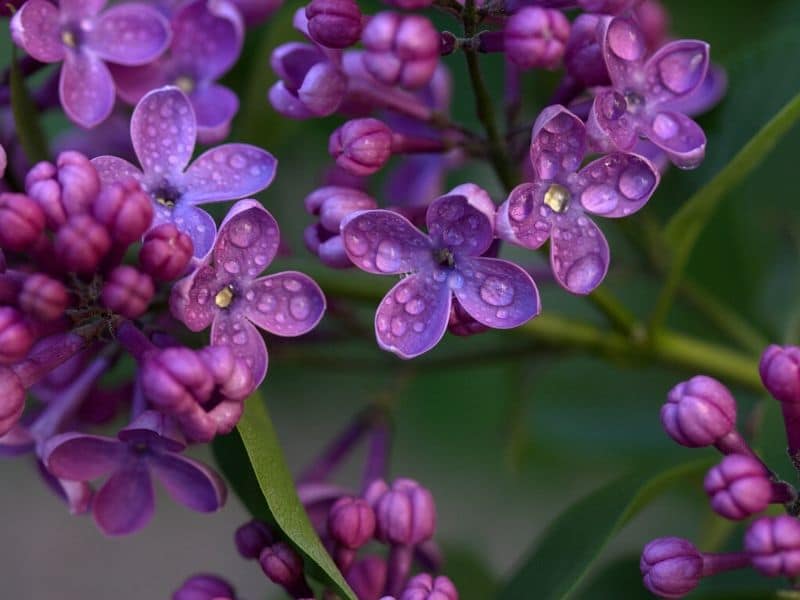
Lilac plants are both evergreen and tolerant of droughts, and you can find several different species that are native to various growing zones. After you plant and water a new lilac for a week to get it growing, you won’t have to water it unless a heavy drought hits the area.
#19. Creeping Phlox
This plant is a multicolored delight to have in your garden, and it is pretty low maintenance to boot. It is commonly grown in rock gardens and other poor soils, so it is very tough.
With only a bit of work, you will be able to have beautiful flowers that will be resistant to drought in your garden.
#20. Ornamental Grass
While it’s not technically a flower, this kind of grass does have a plume that draws the eye to it—just like a flower would! These ornamental grasses grow with ease, and you will be able to see the white plumes best during the hot and dry summer months.
You won’t need to spend time blasting this grass with a hose because it will grow on its own with very little water required.
#21. Butterfly Bush
Though drought-resistant, this plant has one growing caveat attached to it. In some states and ecosystems, the butterfly bush is an invasive species that can cause problems for your local ecosystem and endanger the health of your garden.
Still, if you live in the western part of the US, then this can be the perfect plant that will grow quickly with very little water.
Pollinators love it, and it doesn’t require a lot of water to bloom quickly. Again, make sure that you can safely plant a butterfly bush in your area before you do so—check with your local cooperative extension to be sure.
#22. Coreopsis
This flower looks almost like a daisy, possessing large, vibrant flowers that shine in the sun and look absolutely amazing in your garden.
You can find them in several colors, from pink to yellow, and they can handle hot and dry areas without fail. Plus, you can get a lot of blooms from just one plant, and they are deer resistant as well.
#23. Wormwood
While most people grow wormwood for their foliage, too few gardeners know about its other properties.
The plant is very resilient and tolerant to high humidity, low water, and very hot conditions. It is also resistant to pests and once it begins to grow, it will provide a perfect backdrop for your garden.
#24. Wand Flower
Wand Flower, or Gaura, is one of the best drought tolerant perennials. It is named Wand Flower because the three-foot-high wand-like stems hold several butterfly-shaped flowers. You can get them in several different colors, and of course, the pollinators love them!
#25. Ninebark
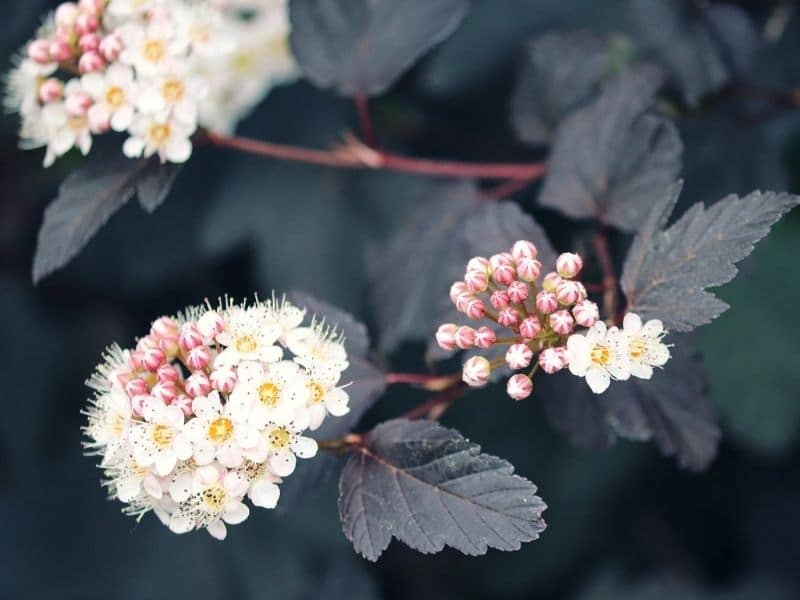
A unique name isn’t everything that this plant has going for it. Ninebark bush has beautiful colored leaves and foliage that can range in colors from dark wine-like purple to a more copper-colored orange.
The flowers are small but often contrast with the darker leaves, making for quite the show-stopping appearance.
#26. Panicle Hydrangea
Once again, you can find these drought tolerant shrubs in several types and different sizes. Even though the flowers look delicate and fragile, the plant is very hardy.
They can handle drought and can deal with tough conditions, and no matter what type of Panicle Hydrangea you buy, you’ll be able to appreciate their beauty.
#27. Baptista
This flower is also called False Indigo, and the story behind the name relates back to the dye made from the flowers.
It is said that when Europeans explored the new world, they would pay the Native Americans to grow the plant. Then they would make a dye from the flowers, and sell it back to Europe as a ‘false indigo’ dye since the real indigo dye was so expensive.
While you probably don’t plan on growing this plant for that reason, there are plenty of other reasons to give it a try. It is very drought resistant, and you will be able to enjoy all types of flowers that sprout up from the stems!
#28. Catmint
This plant doesn’t have too much to do with cats, but you will certainly enjoy the spicy scent that the purple flowers give off. The flowers keep a nice shape and also can last without a lot of water, so you can have them with you even in the harshest conditions.
#29. Verbena
If you want an annual flower with a lot of blooms that can last you until the winter, you can stop after considering the verbena. There are several different types that have different clumps of flowers, and they are very durable.
You won’t have to worry about planting verbenas in dry weather because they will last regardless of the lack of rainfall.
#30. Angelonia
Unlike flowers that bloom outside of the heat of the summer, angelonia blooms the best whenever things are very hot.
You can plant angelonias in different colors and heights to perfectly match your garden. They can handle dry weather and even thrive in very drought conditions.
#31. Bidens
Not only are these annual flowers very drought-resistant, but they also have bright blooms that last all season long. You also won’t have to do any maintenance with getting rid of spent blooms by deadheading as the flowers grow.
Biden flowers can be planted anywhere, and you can find them in several colors, depending on what you want to accomplish for your garden.
#32. Moss-Rose Purslane
Moss-rose purslane is a rare flower that is best planted in the spring. Growing to just three to nine inches tall, these plants spread to create a dense mat of bright flowers similar in appearance to tiny roses. Easy and quick to grow, this drought-tolerant plant also grows well in sandy soil.
#33. Marigold
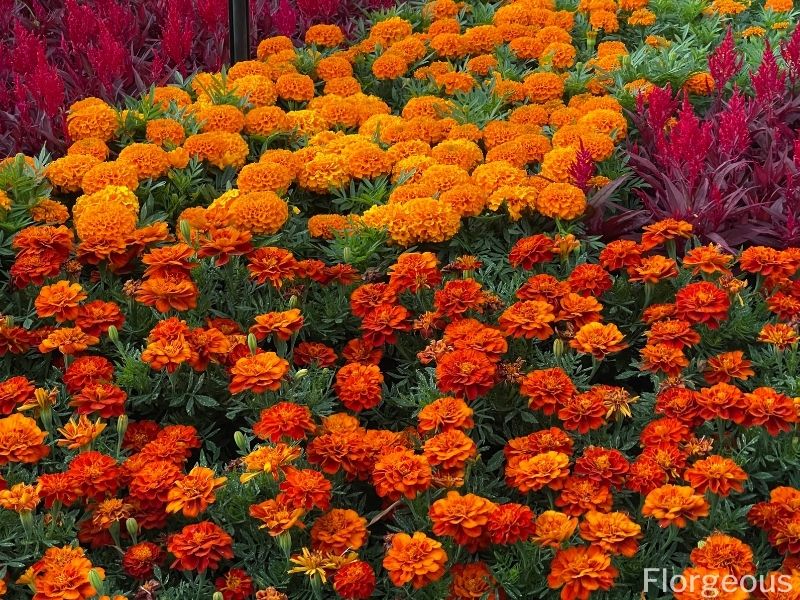
This is one type of flower that practically everyone has grown or at the very least, heard of.
Marigolds give a lot of bang for your buck and will bloom without fail, regardless of the weather or water conditions. In fact, the only thing that will prevent these flowers from blooming is a hard frost!
You can find them in several different colors, and if you plant them between plants that pests love, the marigolds will help to keep the irritating insects away from your garden.
#34. Zinnia
Zinnias produce large flowers that bloom nonstop and are resistant to dry weather and disease. They also bring pollinators to your garden, and you can find different types of colors that will match your garden’s aesthetic perfectly.
In fact, the only zinnia colors you won’t find are blue and brown. So if you want a large and durable flower that will attract attention, the zinnia is the one for you.
#35. Harebell
The harebell is a perennial with slender stems and bell-shaped flowers. It grows well in dry areas and is sure to bring a splash of color to your garden.
Other Tips for Gardening in Dry Climates
If you live in a very dry area that won’t receive a lot of rainfall, that doesn’t mean that you are limited in what you can do with your garden.
Instead, it means that you should focus on planting drought-resistant plants that are not only beautiful to look at but are also hardy enough to bloom and grow through a period of no rainfall.
When you’re trying to grow any kind of dry climate plants, keep in mind that small steps can have major impacts.
For example, you might consider planting only native plants and laying down several inches of mulch after you plant. Mulch will help conserve moisture and can even provide benefits like fertilizing and weed-prevention in your garden.
Otherwise, planting the right plant species is definitely the way to go. Take a look at these different types of drought-resistant flowers, and try a few out in your garden today.
FAQs
Which plant is most resistant to drought?
Succulents, such as cacti and agave, are among the most resistant to drought due to their ability to store water in their fleshy leaves, stems, or roots.
What is the most drought resistant flower?
Lavender is often considered one of the most drought-resistant flowering plants. It has adapted to thrive in dry, arid conditions and requires minimal water once established.
What flowering plants need the least amount of water?
Some flowering plants that need the least amount of water include Blanket Flower (Gaillardia), Russian Sage (Perovskia atriplicifolia), Butterfly Weed (Asclepias tuberosa), Lamb’s Ear (Stachys byzantina), and Coneflower (Echinacea).
Are geraniums drought tolerant?
Geraniums are moderately drought-tolerant once established, but they still require regular watering, especially during hot and dry periods, to thrive and produce abundant blooms. They prefer well draining soil and benefit from mulching to retain moisture.
*image by Strelkov73/depositphotos

